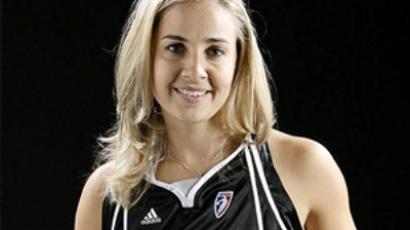In the name of youth
Russia is marking 2009 as the Year of Youth. The state's main goal is to get as many children off the couch and into as much of an active lifestyle as possible. The country's south is at the forefront in that respect.
The city of Anapa in Southern Russia is a destination for many of the millions of Russian holiday makers seeking sea, beach and sun.
The city's economy largely depends on tourism for temporary visitors, but it offers something far more permanent.
Just opened is a facility which should help add to the wrestling and judo champions that the region has supplied.
Three-time Olympic Greco-Roman Wrestling Champion, Aleksander Karelin, understands the importance of making the most of every opportunity, which many young people do not take advantage of.
“Instead of wasting away your time and being a ‘couch potato’, it’s better to come here and break a sweat in training. It’s an amazing opportunity. To achieve a lot, all you have to do is begin. Even if they don’t become winners, they will become more hard-working, self-confident and, in the end, better people,” says Karelin.
Although the opening of this wrestling palace is due to a federal development program, not a single ruble has come from the federal budget. It's just one example of how business is doing its bit in supporting youth sports.
The co-operation between the municipal education and private sectors has led to a state-of-the-art facility for both youth and professional teams preparing for international competitions.
”There is Anapa’s municipal education department, and there is the ‘Kavkaz’ agricultural company. I think the fact they built this gym is an example of creative work, which provides more opportunities,” Karelin says before adding:
”It’s a fruitful co-operation for the authorities, because it responds more to the expectations of the people. More importantly, businessmen realize that it was a professional and effective investment.”
The toffs of the Russian wrestling and judo world have descended on the small town of Anapa just for the opening ceremony. For most of the boys, it is the chance to be in the presence of such role models and a spur to achieving their own sporting glory.
“I saw Olympic champions for the first time in my life, so I am very excited. They inspire me to work harder, do more exercise and have more practice in wrestling,” says Guderdi Sychenalov.
Judo and wrestling are the most popular sports in Southern Russia. For many families, sending their children to such gyms is a privilege, making the region a natural breeding ground for champions. But equally important is how authorities and private investors have teamed up to help youngsters who might have lost the way to get back on track.













